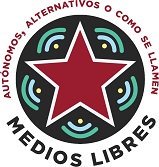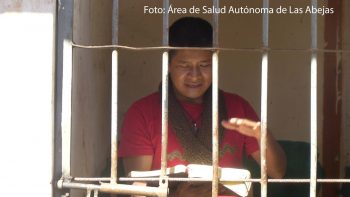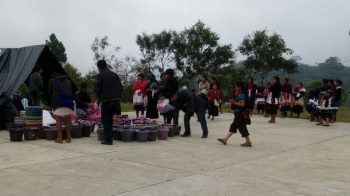
Chiapas
(Español) Con acciones pacíficas Abejas de Acteal obtuvieron su libertad
Fuente: Comunicación Frayba

A las ocho de la noche del día 09 de enero de 2018, obtuvieron su libertad nueve personas, integrantes de La Organización Sociedad Civil Las Abejas de Acteal que se encontraban en injusta detención, en la cárcel comunitaria de Río Jordán, colonia Miguel Utrilla, Los Chorros, en Chenalhó.
En la tarde de ayer, 22 mujeres de Las Abejas de Acteal realizaron una peregrinación en exigencia de la libertad de José Vázquez Entzin, Oscar Hernández Gómez, Ignacio Pérez Pérez, Eusebio López Guzmán, Martín Gómez Pérez, Manuel Ortiz Gutiérrez, Mario Hermilo Pérez Sántiz, Antonio Ramírez Pérez y Sebastián Guzmán Sántiz.1 Posterior a esta acción civil y pacífica, las autoridades comunitarias de Los Chorros liberaron a quienes privaron arbitrariamente de su libertad.
Los liberados se reunieron con su organización en Acteal. En el sitio sagrado, realizaron un rezo y un acto de bienvenida. José Vázquez Entzín agradeció que no los dejaron solos y reiteró su compromiso en la organización colectiva. Guadalupe Vázquez Luna, sobreviviente de la masacre de Acteal, destacó que fueron las diversas acciones pacíficas por las que se logró la libertad de las 9 personas.
El Centro de Derechos Humanos Fray Bartolomé de Las Casas A.C reiteramos que la Privación Arbitraria de la Libertad es una violación de derechos humanos; mantenemos la exigencia de no repetición, cese al hostigamiento a Las Abejas de Acteal y respeto a su autonomía. Agradecemos la solidaridad nacional e internacional, a quienes con sus llamamientos al Estado mexicano contribuyeron en el camino de la justicia en Chiapas.2
Frayba reconoce el proceso organizativo de Las Abejas de Acteal en la construcción de Otra Justicia y autonomía. Son 25 años de afrontar estrategias para destruir su tejido comunitario, pero también 25 años de ser emblema de paz.
San Cristóbal de Las Casas, Chiapas, México.
10 de enero de 2018
Boletín No. 01
(Español) Gira del CIG y su vocera Marichuy en los Caracoles Zapatistas (Video)
La visita de la vocera, Marichuy, del Concejo Indígena de Gobierno a los 5 Caracoles Zapatistas es un momento clave en la historia del movimiento indígena en México y de las luchas altermundistas en el mundo. En este video podrás escuchar y ver a las bases zapatistas, lxs solidarios y los medios libres que recibieron y acompañaron el caminar de los concejales del CIG nombrados por sus comunidades para caminar la dignidad, la rebeldía, la resistencia, la autonomía y la esperanza en el marco del proceso electoral mexicano 2017-2018.










